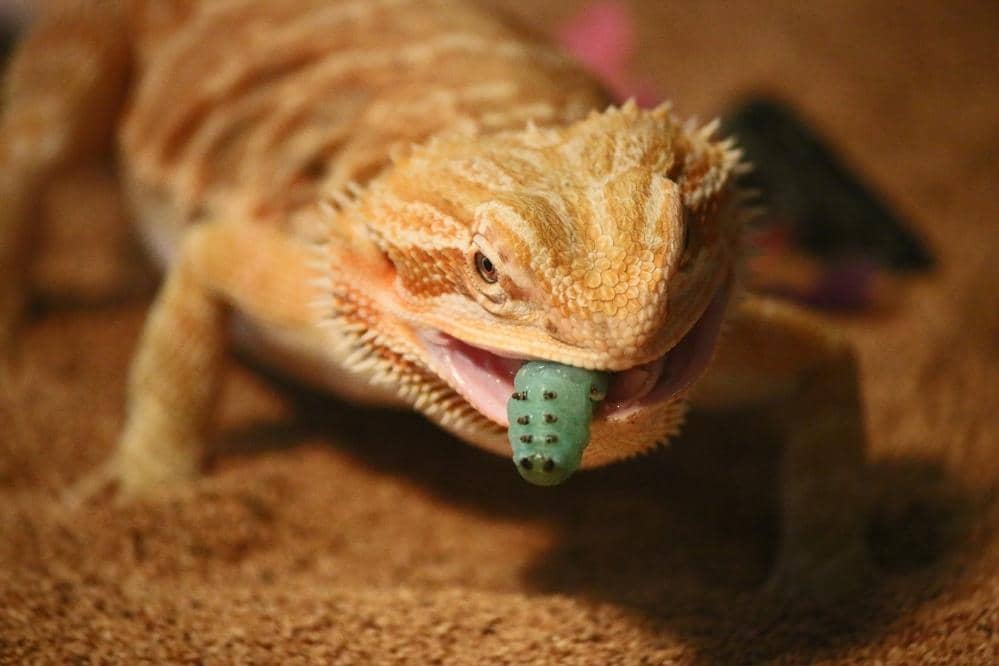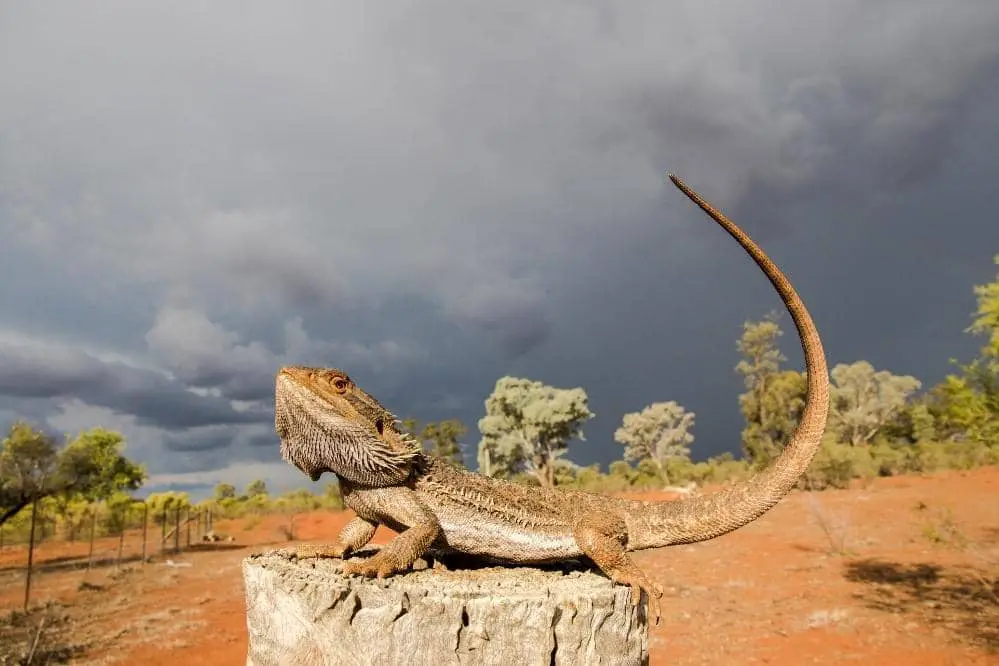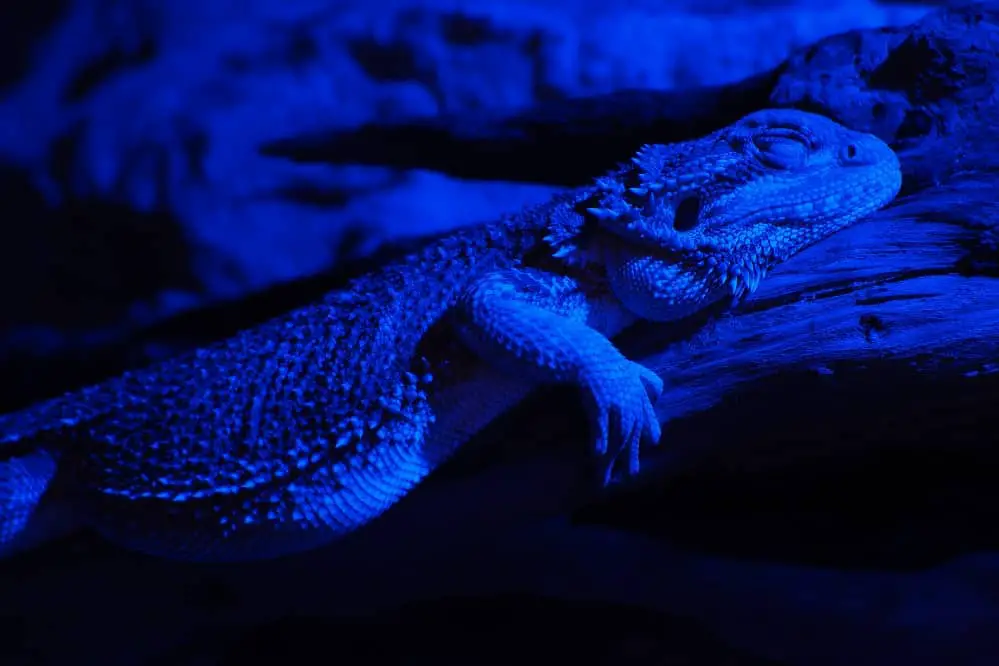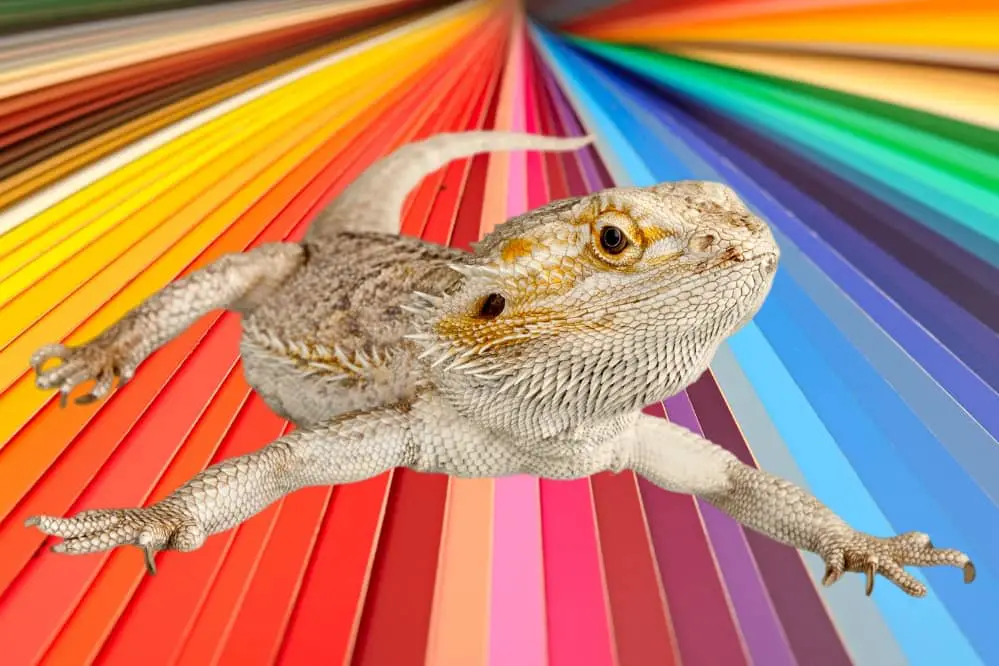Almost every pet owner is curious about how their pet sees the world or whether they can differentiate between colors. The same is true for bearded dragon owners. Since in the wild bearded dragons hunt on small insects and have to keep a close eye to avoid predators, I myself (as a beardie owner) used to wonder how well my bearded dragon can see or can my bearded dragon see different colors.
The single word answer to this query is “YES.” However, you need to know a lot more exciting factors like how far they can see, what colors they can detect, whether they can see in the dark, and what is 3rd eye? Etc.
Surprisingly, the information regarding this topic is so scattered or technical that it’s difficult for a common beardie owner to understand. So I have tried to create a comprehensive post to gather all the related information in an easy to comprehend form in one place.
How Do Bearded Dragons See?
Prior to jumping into details, first, it’s imperative to understand how bearded dragons see. Bearded dragons can hunt small insects and see an enemy from a long distance, thanks to their fantastic eyes that are placed wide apart on the sides of their face. This unique placement of eyes makes their vision much broader than humans and helps them to monitor their surroundings at almost 360o.

A surprising aspect of the bearded dragon’s eyesight is the “Third Eye.”Yes, our beardies have 3rd eye though it doesn’t look like a normal eye. 3rd eye is actually above their heads as a grey spot in the middle. Though the 3rd eye can’t see the images or colors like a normal eye, still it’s crucial for a beardie’s survival in the wild. It actually senses light and shadow (or dark), thus helping beardies to avoid predators, especially birds that attack from above.
Can Bearded Dragons See Colors?
Yes, the world for bearded dragons is as colorful as for humans; in fact, bearded dragons can see more colors than humans. I know you are surprised, and another question may be erupting in your mind, how? To answer, we need to have a comparative look at the ocular anatomy of bearded dragons and humans. The number of light or color detecting cells (that are found on the back side of the eye) is four in beardies, while humans have only three. The extra number of cone cells enables bearded dragons to see far beyond the visual spectrum of humans. Now you may understand why reptile experts stress the use of the right UV bulb; yes, our bearded friend can also see ultraviolet rays.
Is It Imperative To Keep Bearded Dragons In A Colorful Environment?
Though bearded dragons can detect colors, the provision of a colorful environment is not necessary for their survival. Bearded dragons are hardy animals by nature, and in wild conditions, they use their fantastic vision to hunt insects, locate food and avoid predators. In addition, beardies don’t use their ability to detect color to interact with the environment; rather, they rely on their sense of smell and touch to explore their surroundings. So beardies can thrive in a wide range of environments as long as enough food and water are available there.
How Far Can A Bearded Dragon See?

Despite extensive research, I can’t find any standard range of beardie’s vision. However, it has been observed that bearded dragons can see at reasonably long distances. This feature of their far vision helps them avoid wild predators. Some beardie owners have also seen their beardies watching the airplane in the sky until it disappeared. You can also check their vision yourself. Place your bearded dragon at one end of a hall and his favorite food or insect at the opposite end and observe whether he moves toward the food. If yes, it means he can see it. If not, try again by reducing the distance a bit.
Are Bearded Dragons Attracted to Specific Colors?
Though the spectrum that bearded dragons can see is much wider than humans, they are more attracted to some colors. For example, generally, beardies are more inclined toward green and red because they associate these colors with greens or plants and ripe fruit, respectively.
Can Beardies See In The Dark?

No, our bearded friends can’t see in the dark. Like humans, bearded dragons are diurnal animals (which mean they are awake during the day and sleep during the night). So their eyes are not made to see in the dark, unlike some nocturnal animals (who can see in the dark). Therefore it’s crucial to set a day-night pattern by turning the light on/off at a fixed time to match their biological clock; otherwise, lack of sleep can adversely affect your beardie’s health.
How Can You Improve Your Beardie’s Vision?
Though the acute vision of bearded dragons enables them to locate food and avoid predators in the wild, no one can deny the importance of vision in captivity. So you may be wondering how you can improve your beardies’ ocular health. The most essential factor regarding eyesight is diet. A bearded dragon needs protein, vitamins (especially vitamin D), minerals (like calcium, phosphorus, etc.), and light to be healthy. So make sure that you are providing everything in the correct combination according to age. Only a well-balanced diet can ensure your beardies’ overall health, including ocular health.
Other crucial factors are lighting and temperature. Beardies can’t regulate their body temperature, so maintaining the required temperature inside the vivarium is imperative. In addition, proper lighting (UVA & UVB lights) is crucial to ensure the absorption of calcium and vitamin D from the intestine into the body.
Summary
Bearded dragons can see colors; in fact, they can see more colors than humans because their visible spectrum is much wider than ours. In addition, our bearded friends have excellent eyesight that enables them to see small insects or predators from a long distance. Thus beardies’ extraordinary ability to see helps them survive in wild conditions. Though in captivity, they don’t have to hunt or no danger of predators, you can’t deny the importance of vision to enjoy life. So make sure to keep their eyes in good condition and provide them with a good combination of insects, vegetables, and fruits to meet the nutrient requirements of your bearded friend. Remember that the insect to greens ratio varies with age, so it is crucial for every beardie’s owner to know his beardie’s age and its nutrient requirements.
We hope this article solved the mystery regarding the bearded dragon’s ability to see the colors and their vision; you have got the answer to all the questions wondering in your mind regarding this topic.

